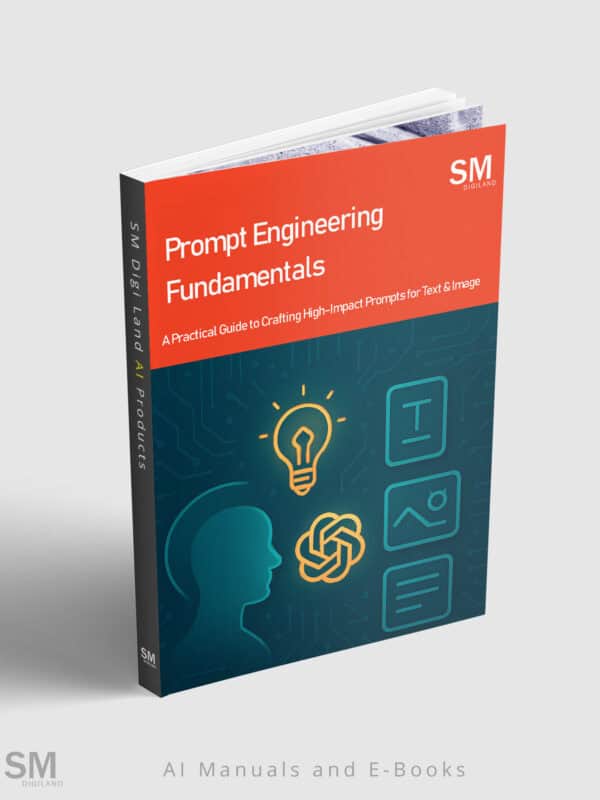Understanding AI Prompts
AI prompts are fundamental elements that shape the interaction between users and artificial intelligence systems. At their core, prompts function as instructions or questions that guide AI in generating relevant and coherent responses. The clarity and specificity of a prompt directly influence the quality and appropriateness of the output produced by the AI.
There are various types of prompts that can be employed, primarily categorized as open-ended and specific prompts. Open-ended prompts, which invite expansive and creative responses, elicit a wide range of outputs. For instance, asking an AI to “describe the future of technology” allows for a broad exploration of ideas. Conversely, specific prompts seek focused answers and tend to lead to clearer, more concise responses. An example would be, “What are the benefits of renewable energy?” This type of prompt not only defines the scope of the inquiry but also narrows down the expected response.
The effectiveness of a prompt greatly affects the relevance of the generated content. Well-crafted prompts facilitate meaningful interactions with AI, while vague or poorly constructed prompts can result in irrelevant or nonsensical outputs. For instance, a prompt like “Tell me something interesting” may result in a wide array of unrelated information, a testament to its open nature and lack of direction. In contrast, a prompt such as “Explain the significance of climate change in urban planning” directs the AI towards a specific topic, yielding content that is more aligned with the user’s expectations.
Establishing clarity and purpose in prompt creation is vital. When users articulate their requests clearly, they significantly enhance the potential for receiving satisfactory responses from AI. In this context, understanding how to formulate effective AI prompts is an essential skill for maximizing the capabilities of artificial intelligence in various applications.
Key Components of a Good AI Prompt
Crafting a well-structured AI prompt is crucial for eliciting high-quality responses from artificial intelligence systems. The effectiveness of a prompt hinges on several key components, including specificity, context, tone, and clarity of goals. By focusing on these elements, users can enhance the interaction between themselves and the AI, resulting in more accurate and relevant outputs.
Specificity is perhaps the most vital aspect of an effective prompt. A clear and detailed request guides the AI toward understanding the user’s needs. For instance, instead of asking, “Tell me about climate change,” a more specific request would be, “Can you provide an overview of the effects of climate change on Arctic wildlife?” This specificity helps eliminate ambiguity and directs the AI to the precise information the user is seeking.
Context also plays a significant role in shaping the responses generated by the AI. Providing background information about the topic or explaining the purpose of the request can help the AI generate more tailored answers. For example, including context such as “For a school project on environmental science,” allows the AI to align its response with educational requirements, potentially increasing the quality and relevance of the information provided.
The tone of the prompt is another essential component. Depending on the desired interaction style, users can request formal, casual, informative, or persuasive responses. For instance, if one seeks a formal analysis on economic trends, the prompt might state, “Please provide a detailed analysis of current economic trends in a formal tone.” The tone of the prompt sets expectations for the type of response the AI should produce.
Finally, stating clear goals for the AI’s output ensures that the responses are focused and actionable. Including explicit intentions, such as “I need suggestions for a marketing strategy,” can help the AI align its output with user objectives effectively. By mastering these key components, users can transform vague requests into focused prompts, leading to more meaningful and productive interactions with AI systems.
Common Mistakes to Avoid When Writing AI Prompts
Crafting effective AI prompts is crucial for obtaining accurate and relevant responses from artificial intelligence. However, many individuals encounter common pitfalls that hinder their ability to communicate effectively with AI systems. One major mistake is ambiguity. When a prompt is unclear or open to various interpretations, the AI may generate responses that do not align with the user’s intentions. For example, asking an AI to “tell me about the best sports” offers little direction; specifying a particular sport or the context in which it is “best” would yield more precise information.
Another frequent error is the lack of context. Providing background information can significantly influence the quality of the AI’s response. In a scenario where a user is seeking advice on project management, simply asking for “tips” without any context may lead to vague and generalized suggestions. Instead, a well-structured prompt such as “What are effective project management tips for a small team working remotely?” gives the AI sufficient details to deliver tailored responses that meet the user’s needs.
Complex requests also pose challenges in AI prompt writing. Overly intricate or multifaceted questions can confuse the AI, resulting in incomplete answers. For instance, asking multiple questions in a single prompt may lead to fragmented responses that fail to address any specific query comprehensively. To avoid this, it’s advisable to break down complex inquiries into simpler, individual prompts to ensure clarity and better engagement from the AI.
To illustrate these pitfalls, consider a case where a user asked an AI to “explain quantum physics.” The response lacked the target audience consideration and was filled with jargon, rendering it inaccessible. Conversely, an inquiry like “Can you explain quantum physics at a high school level?” not only improves understanding but also facilitates effective knowledge transfer. By being mindful of ambiguity, context, and complexity, users can enhance their AI interactions and derive meaningful information.
Practical Exercises to Enhance Your Prompt Writing Skills
Improving your AI prompt writing skills is a dynamic process that benefits from hands-on practice. By engaging in targeted exercises, you can refine your ability to craft effective prompts. Below are several guided activities designed to enhance your skills in generating precise and clear prompts.
First, consider the task of rewriting poor prompts. Analyze a selection of ambiguous or overly complex prompts and then reformulate them to improve clarity. This exercise allows you to identify common pitfalls, such as unnecessary complexity or vagueness, and encourages you to think critically about the language you use. Aim for simple, direct wording that accurately conveys the intent of the request.
Next, shift your focus to creating prompts for specific tasks. Identify various scenarios, whether for content generation, data analysis, or customer interaction, and draft prompts that would yield the desired outcomes. For example, if tasked with generating blog ideas, specify the target audience and themes to guide the AI effectively. This practice sharpens your ability to tailor prompts to meet distinct requirements and enhances adaptability to different contexts.
Peer review is another valuable activity for prompt enhancement. Collaborate with fellow learners to exchange prompts and provide constructive feedback. This interaction will not only expose you to different writing styles but will also allow you to recognize elements of effective prompt design. Constructive critiques can help you understand how diverse wording, structure, and clarity can affect the AI’s output.
For further learning, consider exploring resources such as online courses, workshops, or communities dedicated to AI prompt writing. Additionally, review examples of successful prompts used in various applications, which can serve as inspiration for your own practices. By actively participating in these exercises and utilizing available resources, you will significantly develop your prompt writing proficiency.







I think the article on AI prompt writing was interesting, but do we really need to master this art? I mean, cant we just let the AI do its thing without overthinking our prompts? Just a thought!
I never knew AI prompt writing could be so complex! Who wouldve thought theres an art to it? Guess Ill have to up my game with those practical exercises. AI, here I come!
I think understanding AI prompts is like deciphering secret codes! Its all about finding the right words to unlock the power of AI. Who knew writing prompts could be so intriguing?
Absolutely—it really is like cracking a mysterious cipher. Every word choice steers the AI in a new direction, unlocking capabilities you didn’t know were there. That thrill of discovery is exactly why we created our 1000 AI Prompts for E-commerce Success book: to give you hundreds of these “code keys,” each designed to spark fresh ideas and powerful outputs. Once you start experimenting, you’ll see just how much nuance even a single word can add—turning simple instructions into surprisingly creative results.
I think the article missed the mark by not addressing the ethical implications of AI prompt writing. Shouldnt we also be discussing the potential biases and consequences of these prompts? Just a thought!
I disagree with the idea that AI prompt writing is easy. It takes practice and creativity to master it!
I think AI prompts are like puzzles – challenging but rewarding when done right. Cant wait to try out those practical exercises!
Can AI prompts really outsmart humans? Lets debate! 🧐🤖 #AIwritingSkills
AI prompts are like cryptic puzzles – challenging yet rewarding to decipher! 🤔🧩
Are AI prompts the new poetry? Lets discuss over virtual coffee! ☕
Interesting read! But arent AI prompts quite subjective? Can one guide really cover all intricacies?
Does anyone else think that mastering AI prompts could really revolutionize how we use and interact with technology?